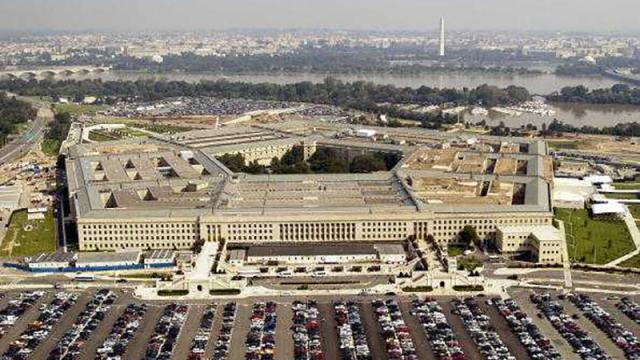The Pentagon has spent the $US1 ($1.4) billion it received through the CARES Act on personal protective equipment, medical gear, and other emergency response supplies to support the nation’s teetering healthcare system.
Just kidding, it spent it on fighter jets and body armour. Mask boring; loud thing go boom.
Per the Washington Post, the U.S. Defence Department awarded hundreds of millions of dollars from a Defence Production Act to contractors for projects that largely have little or nothing to do with the pandemic. That includes $US186 ($260) million to Rolls-Royce and ArcelorMittal for shipbuilding and naval maintenance; tens of millions to develop various types of drones and maintain a worldwide radar network; $US80 ($112) million to a company called Spirit Aerosystems to shore up “domestic production capability and capacity” during the aviation industry slowdown; $US15 ($21) million to Bethel Industries for lasers that speed up body armour production; and $US2 ($3) million to American Woolen Company for “U.S. domestic production of fabric for Army dress uniforms.”
Pentagon officials justified the costs as shoring up a defence industrial base that the White House has insisted is too dependent on foreign supply chains to be relied upon during a crisis, the Post wrote, and have more generally argued that the broad terms of the DPA funds allow them to direct it as they see fit.
Ultimately, under the Pentagon plan, some $US688 ($961) million of the money went to defence contractors. Ten of the 30 companies selected so far also received funds through the Payment Protection Program, a separate program run by the Small Business Administration that has doled out hundreds of thousands of loans designed to prevent layoffs. (That program has faced scrutiny for loaning federal money to big businesses, while tens of thousands of recipient firms have laid off workers or pocketed the loans without returning furloughed staff to the job).
Defence Department lawyers in part justified spending so much on defence contractors by striking a deal where U.S. Health and Human Services provided $US17 ($24) billion in funding to medical companies, the Post wrote, thus in the Pentagon’s logic giving them maximum flexibility with their own billion in DPA funds.
The U.S. military has an operating budget of around $US934 ($1,305) billion per year for the fiscal year extending from October 2020 to September 2021, including about $US705 ($985) billion in Defence Department and contingency operations funds related to the war on Islamic State, and $US228 ($319) billion in other defence-related spending. Boston University and and Brown University’s jointly run Costs of War project estimated last year that the Pentagon directed $US370 ($517) billion of its $US676 ($945) billion budget in 2019 to contractors — much of it squandered on endemic waste. Thus, redirecting the funding earmarked for covid supplies amounts to a $US1 ($1) billion backdoor bailout of an industry already awash in subsidies.
“We are thankful the Congress provided authorities and resources that enabled the [executive branch] to invest in domestic production of critical medical resources and protect key defence capabilities from the consequences of COVID,” undersecretary of defence for acquisition and sustainment Ellen Lord told the Post. “We need to always remember that economic security and national security are very tightly interrelated and our industrial base is really the nexus of the two.”
The U.S. House Committee on Appropriations, controlled by Democrats, wrote in a 2021 defence budget report it doesn’t view the spending as in line with what it actually intended: investing in the nation’s capacity to produce personal protective equipment. The Defence Department itself projects the U.S. will need up to 3.3 billion N95 masks.
“The Department’s own estimates indicate that the total domestic consumption of N95 masks is as high as 3,300,000,000,” the committee wrote. “The Committee’s expectation was that the Department would address the need for PPE industrial capacity rather than execute the funding for the DIB [defence industrial base]. Furthermore, the Department plans to execute $US100,000,000 ($139,730,000) of CARES Act DPA [Defence Production Act] funding to make loans to private companies which has not been done for several decades under the DPA.”
The committee added that it is, “concerned that this funding will not support increased medical supply production, as intended by the additional CARES Act funding.”
